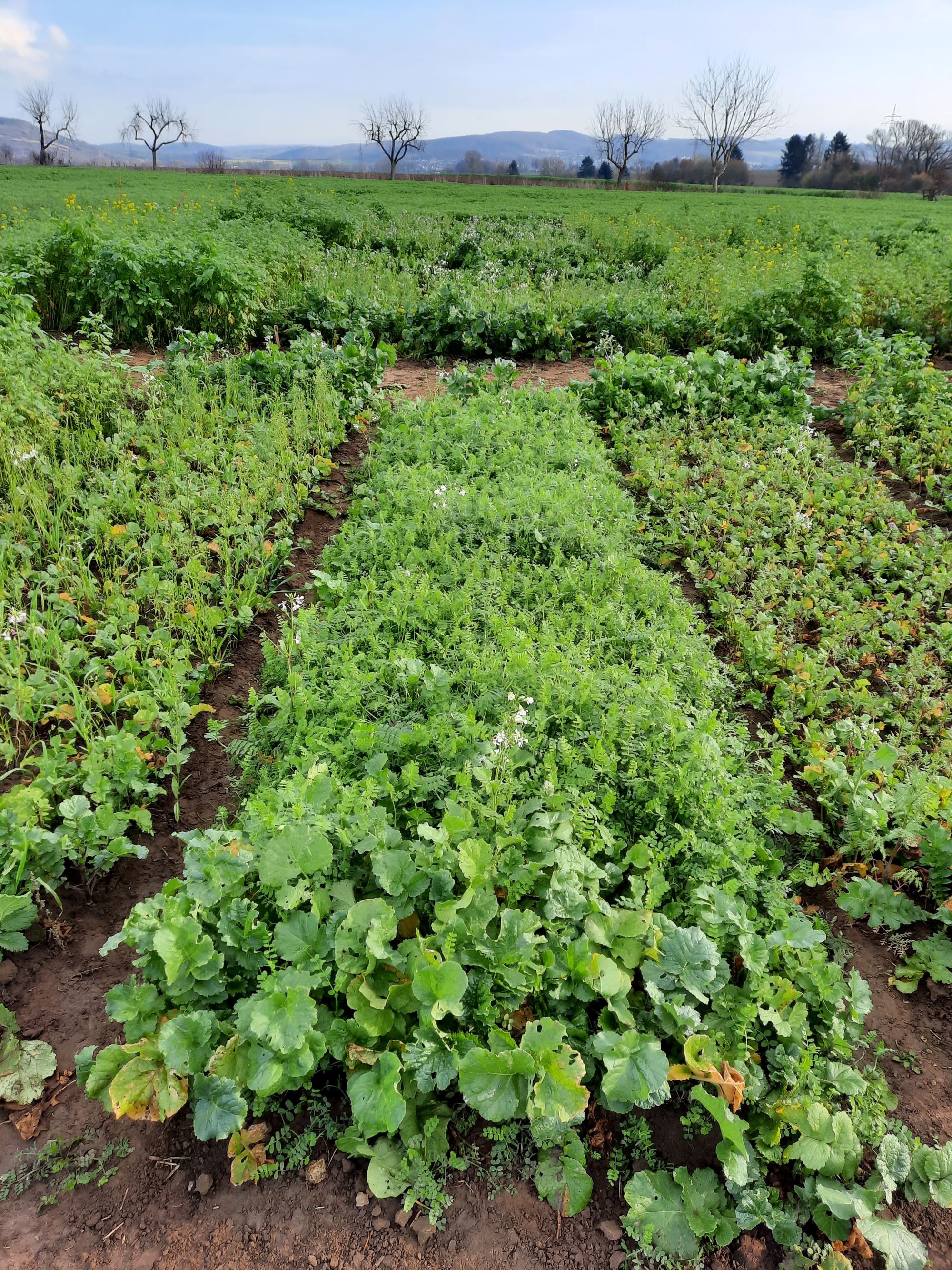KWS Fit4NEXT – Keep nitrogen in the system with catch crop mixtures.
Targeted cultivation of catch crops not only allows you to comply with political requirements or meet the goals of good agricultural practice; both now and in the future, your catch crop mixtures can also help you make better use of breaks in cultivation in order to...
Make efficient use of nitrogen
from the soil and the air
Boost soil fertility
Sequester CO2
Nitrogen availability and nitrogen deficiency in combination with different KWS Fit4NEXT catch crop mixtures.
We performed an in-house scientific trial to test the influence of nitrogen availability and nitrogen deficiency in combination with different KWS Fit4NEXT catch crop mixtures. The underlying question has become relevant for cultivation in red zones, and also due to the huge price increases for nitrogen fertilizers. All catch crop mixtures were grown both with fertilizer (30 kg N/ha from CAN) and without. In one half of the trial, the straw from the previous winter barley crop was removed. Since the decomposition of straw also binds nitrogen, this results in differing levels of nitrogen availability ranging from fertilized without straw (30 kg N) to unfertilized with straw (straw/0 kg N).
The dry mass (DM) and nitrogen (N) yields in kg/ha from the aerial plant biomass clearly demonstrate the advantage of catch crop mixtures containing legumes when the N supply is limited. Under these conditions, Fit4NEXT catch crop mixtures with higher legume contents such as DIVERSITY, RAPE N-MAX, BEET N-FIX, or POTATO N-FIX develop a good crop in spite of everything and therefore fulfil the various functions of a catch crop mixture. If N is available, this type of mixture still achieves good results, although catch crop mixtures with lower legume contents and mixtures without legumes can also perform well. It was also shown that a diverse species composition can have a good buffer effect and adapts well to various conditions.
The additional nitrogen fixed by catch crop mixtures containing legumes is beneficial to the crop rotation and can therefore reduce the N fertilizer costs per hectare. With regard to the overall system,CO2 is managed more economically thanks to the use of biologically fixed nitrogen. At the same time, the carbon footprint in the crop production chain is also lowered as a result of the additional CO2 savings.
Contact




